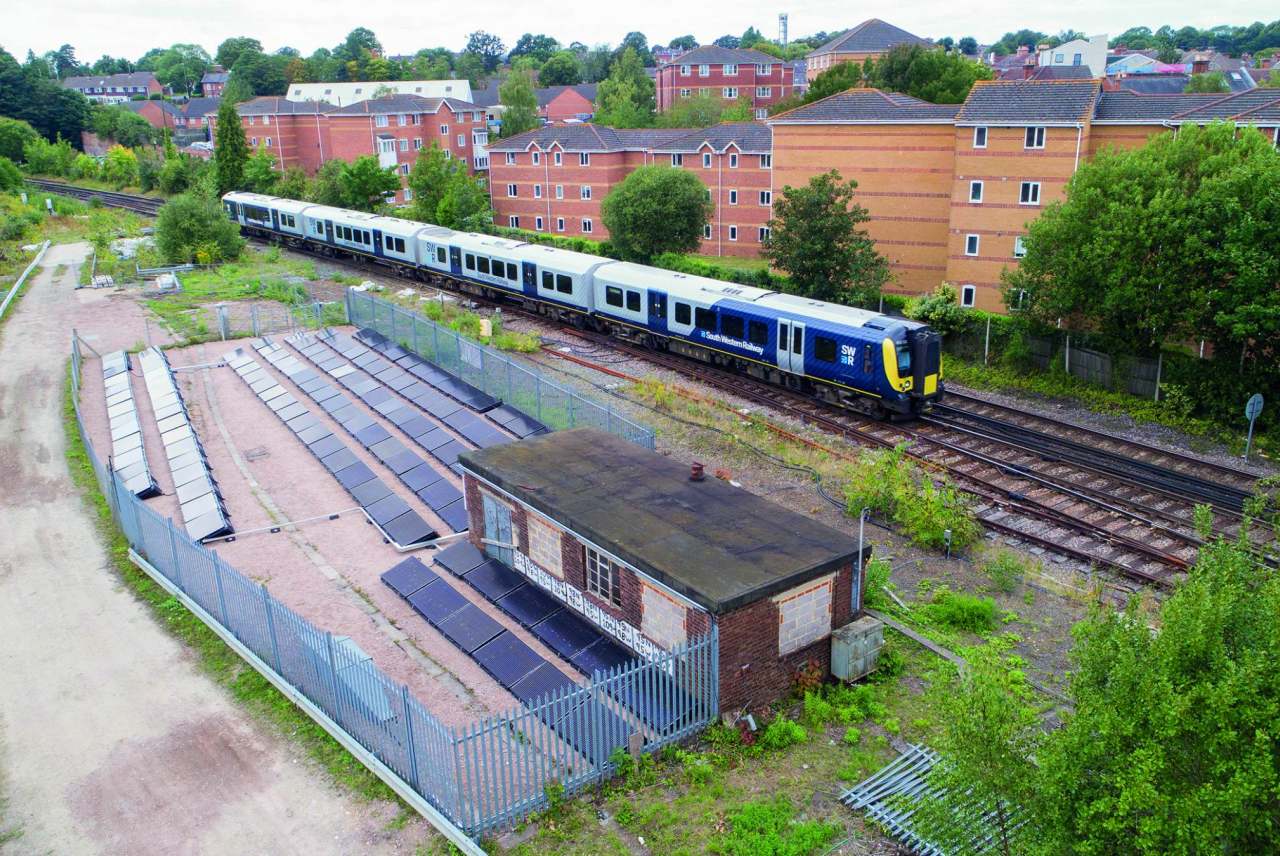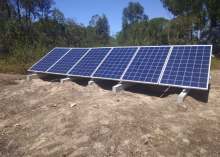If we've got any chance of averting climate meltdown, then the one ace that we've got up our sleeves is human ingenuity. Currently, one of the most exciting examples of a techno-fix to the climate crisis can be found on a neglected piece of ground next to a railway line just outside Aldershot station.
Around 100 solar panels are now supplying renewable energy to the electrified rail line to directly power the trains that rumble along the tracks every day, for the first time anywhere in the world.
Leo Murray from Riding Sunbeams, the social enterprise leading the project, which was set up by climate charity Possible and the low-carbon co-op Community Energy South comments:
“We'd had the idea of installing solar farms next to railway lines to power trains, but because this had never been done before we didn't know if it was technically possible. Usually solar panels connect straight to the national grid,”
By working with a team of experts and electrical engineering specialists, the breakthrough came last August with the confirmation that yes, it was indeed possible to use solar-generated electricity to directly provide power for trains. Now Riding Sunbeams is powering full beam ahead. Murray says,
“Our goal is to generate enough solar energy to power the equivalent of one in every ten trains in the country,”
Plus, there are plans to roll out solar-powered trains in Wales where Riding Sunbeams is now working with Transport for Wales to build renewable energy, including wind power into their plans to electrify the train lines north of Cardiff.
Further afield, Murray says that even though solar works well in relatively high-latitude countries such as the UK, there's an even bigger opportunity for track-side solar farms in sunnier South America and also especially India.
The reason why climate social entrepreneurs such as Murray are so excited by the prospect is that solar has a vastly smaller carbon footprint compared to grid-supplied electricity.
“Drawing power from the grid emits five times as much carbon as getting it from solar, so every unit of power from the grid that we're meeting with solar yields very large carbon savings,” Murray explains.
The other key benefit of solar is that, thanks to its plummeting cost, future subsidy-free solar farms could supply electricity at a lower cost than that supplied from the grid. Significantly, this has caught the eye of Network Rail which has given the project an enthusiastic thumbs-up and is now embarking on its own ambitious plan to ditch polluting diesel and decarbonise its network, which is the single biggest user of electricity in the UK.
Central to the whole Riding Sunbeams pioneering project is the involvement of local communities as Leo Murray explains:
“Our goal has always been to see community and commuter-owned solar farms powering the railways for the benefit of the railway routes, the communities that host them and of course the planet.”
The first community-owned solar farm that's on track to start powering its local railway is Cuckmere Community Solar Company in East Sussex which lies on the London to Eastbourne mainline.
With negotiations currently taking place with Network Rail, the planned ten-hectare solar farm is expected to start powering a 32 km section of the commuter line within 18 months.
Alistair Scott from Cuckmere Community Solar, adds that:
“The idea that we can feed clean solar power directly from a locally owned solar power station into the railway is a perfect way of living much more in harmony with the planet... If we pull this off, it will count as a big life achievement for me.”





